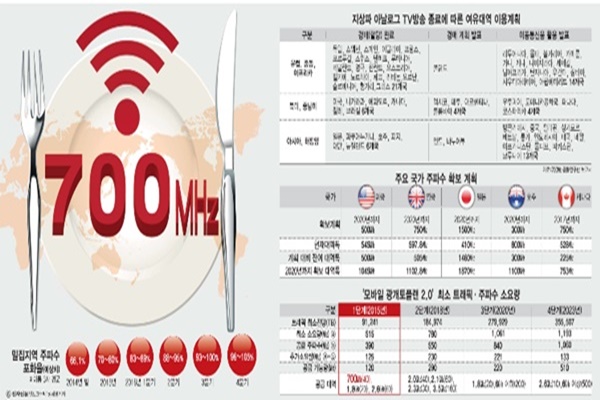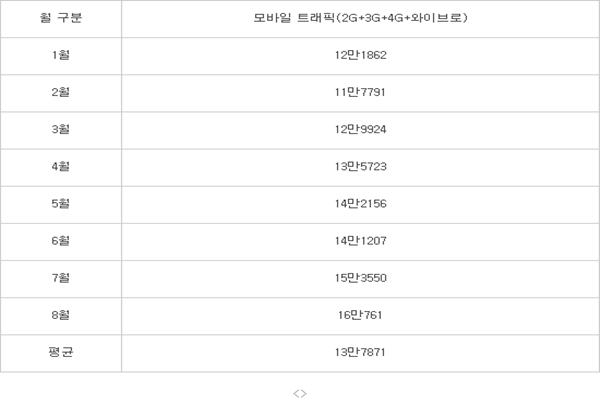Wireless communication traffic is increasing rapidly. Starting from this year, it exceeded government’s estimated value for 5 months in a row, and annual average traffic also exceeded estimation. These situations are occurring because data traffic is rapidly increasing due to increase of LTE48 members. Experts had warned that ‘communication blackout’ situation can occur if TDD (Time Division Duplex) frequency is not allocated to mobile communication hurriedly.
According to Ministry of Science, ICP and Future Planning (MSIP), mobile traffic record 160,761 TB, which is a value that adds all of wireless communication (2G + 3G + 4G + WiBro166) traffic excluding Wi-Fi, in August. This value greatly exceeds 131,965 TB, which is a 2015’s monthly average traffic that had been estimated by MSIP when it announced ‘Gwanggaeto Plan 2.0’ in December of 2013.
Mobile traffic exceeded government’s estimated value as it recorded 135,723 TB in April and it has been exceeding estimated value every month ever since April.
Mobile traffic easily exceeded government’s estimated monthly average as it recorded 137,871 TB on average per month starting from January to August. LTE was the primary reason why traffic increased so heavily as it formed 95% of overall traffic.

Experts believe that FDD (Frequency Division Duplex) method, which is being used in South Korea for its mobile communication, has reached its limitation. Amount of FDD frequency that is scheduled to be auctioned between this year and next year is about 140 MHz. If 3 mobile communication businesses equally share 140 MHz, then each business takes about 45 MHz. This amount cannot manage heavy increase of traffic, and some say that ‘blackout’ phenomenon can occur at a worst case of scenario.
Due to this problem, many are saying that TDD method, which is not introduced in South Korea yet, needs to be allocated to mobile communication areas as soon as possible. There are some opinions that WiBro’s frequency (2.3 GHz bandwidth and 60 MHz range), which is losing its members fast, needs to be changed for mobile communication. After recording 1.01 million members in September of 2013, WiBro’s members decreased to 810,000 members in August of 2015.
If TDD method that is being widely used in China, India and others is introduced, some predict that a new breakthrough will be prepared in South Korea’s communication equipment industries that currently have stagnant growths. “If this situation continues, there is a high chance that communication might be discontinued in areas where there are a lot of floating populations within mobile communication businesses that have many members. We need to supply additional frequency such as currently-used TDD frequency and others by using WiBro.” said Professor Park Deok Kyu of Mokwon University’s Information Communication Convergence Engineering Department.
Staff Reporter Kim, Yongjoo | kyj@etnews.com
